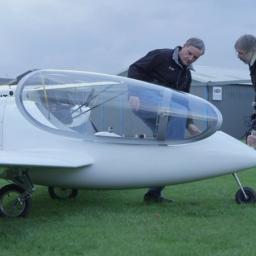Boeing developing experimental hybrid-electric aircraft
 Researchers from the University of Cambridge, in association with Boeing, tested the first aircraft to be powered by a parallel hybrid-electric propulsion system, where an electric motor and petrol engine work together to drive the propeller. The demonstrator aircraft uses up to 30 per cent less fuel than a comparable plane with a petrol-only engine. The aircraft is also able to recharge its batteries in flight.
Researchers from the University of Cambridge, in association with Boeing, tested the first aircraft to be powered by a parallel hybrid-electric propulsion system, where an electric motor and petrol engine work together to drive the propeller. The demonstrator aircraft uses up to 30 per cent less fuel than a comparable plane with a petrol-only engine. The aircraft is also able to recharge its batteries in flight.Though increasingly common in the automotive industry, the technology has never before been brought to the aerospace sector. During take-off and climb, when maximum power is required, the engine and motor work together to power the plane, but once cruising height is reached, the electric motor can be switched into generator mode to recharge the batteries or used in motor assist mode to minimise fuel consumption. The same principle at work in a hybrid car.
. annual inspection (about $400 for my little plane, much more for a 747)
. 100 hour inspection - yep every plane in commercial service must be inspected every 100 operational hours at about the same level as the annual inspection
. landing fees - to land and take off from JFK, LGA, or EWR costs over $100 for my little 2 place plane
.fuel of course
.lubrication oil
.replacement parts for time limited parts - ex a gen-set may be rated at 10,000 hours after which it must be replaced even if in perfect order
. mandated engine overhauls - my engine must be given a complete overhaul every 500 operating hours
. recurring training for pilots - for private pilots this comes out to something between $500 and $2000 every 2 years, for ATP pilots (airline pilots) the costs are greater and so is the frequency
.cost of operating slots at major airports - yep the airlines have to pay for take off and landing times at LGA,JGK, LAX, SFO etc.
So while we would all love to see lower costs I can not say it is all due to greed. Something I read several years ago claimed that airlines only made a few percent profit. I have not been part of an airline, but I am friends with owners of small charter operations and I can tell you they have real thin profit margins.
From what I see the best use of hybrid technology in aviation is for small general aviation aircraft like mine, and then the small to medium sized puddle jumpers used by the regional operators and charter operations. The technology does not lend it's self well as a replacement for jet propulsion, so the bigger faster planes will not benefit from this work in the foreseeable future.
BSDGuy